Gibraltar
Ironically, the city of Gibraltar is a very tiny “over seas territory” of Great Britain. Measuring only 2.5 square miles, the entire territory is literally less than half of the size of Heathrow Airport. While throughout history, Morocco and Spain have vied for supremacy in the area, Great Britain has reined supreme, controlling the geographical area for centuries.
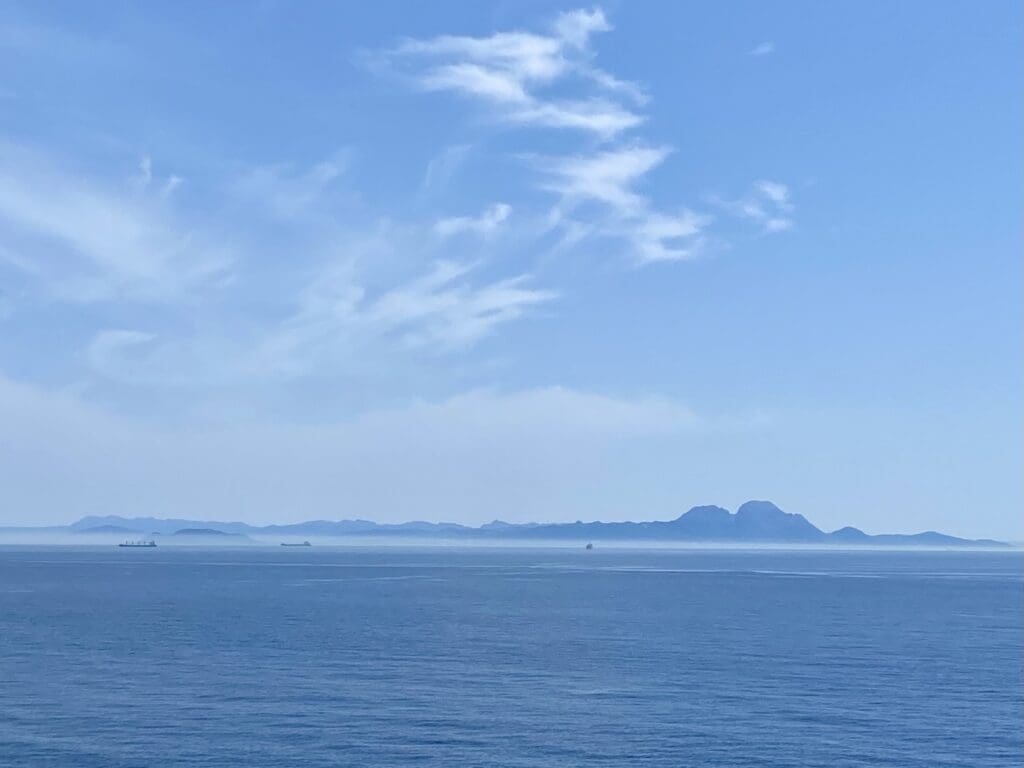
However, before sharing the story of the Brit’s success, I would first like to talk about the city, which is built on the end of the peninsula.
In the 1300s, an aqueduct was built along the edge of the village, providing residents a source of fresh water (which is not very abundant in the area). During ongoing battles between Muslim, Christian, Turkish, Spanish and Moroccan troops, the walls of the aqueduct were built higher and higher, fortifying the small town.
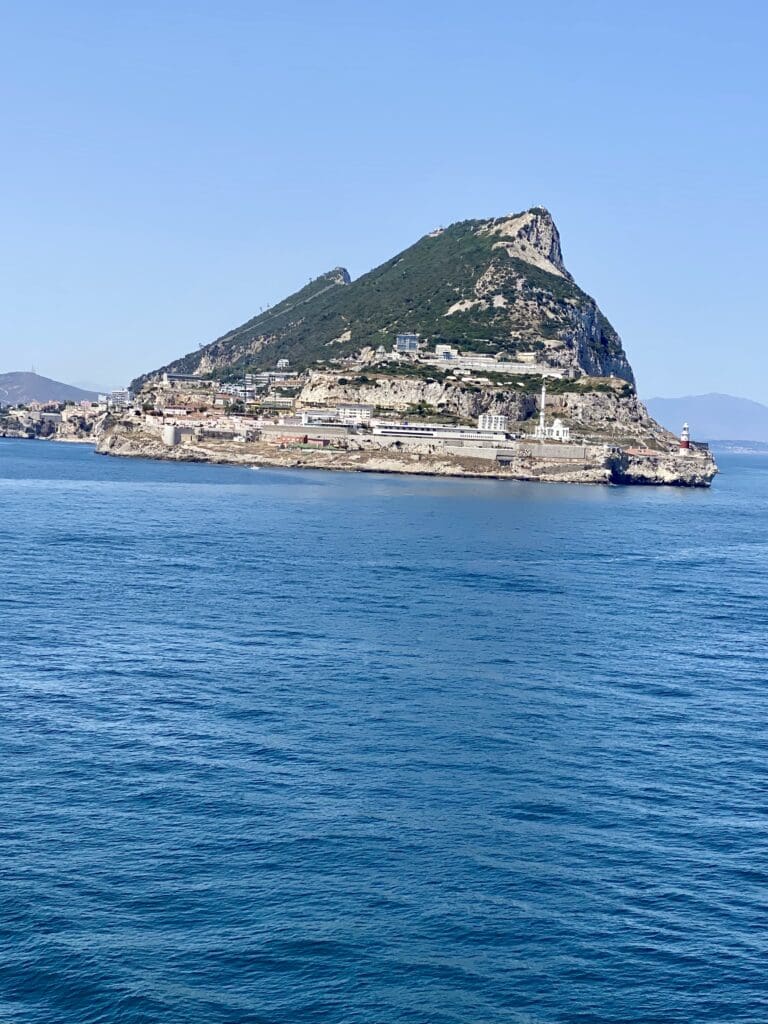
In later years, tucked away inside the fortified stone walls, Gibraltar grew to be a small town. It resembled many other European villages. Its customarily colorful homes sat atop proprietors’ shops, which bordered windings cobblestone streets. However, this quintessential village had a secret, in the form of the tides washing sand in from the Sahara Desert. Beginning in the 1980s, through ongoing land reclaim action efforts, Gibraltar has more than doubled its geographical area.
This has resulted in a somewhat humorous cityscape, with the original small village tucked between the rock (mountain) and the inside of the fortification walls, and the tall buildings of the newer city located between the old village and the new coastline.
The city is now home to some 38 thousand citizens, with a daily influx of an additional 15 thousand workers from Spain and Morocco. Although the city boasts over 30 skyscrapers, its inhabitants struggle with affordable housing. The starting cost of most apartments is in the one million dollar range. Also of interest is the fact that these skyscrapers, and the entire town of Gibraltar are built on a major fault line, created by the nearby Eurasian and African tectonic plates. Yikes! (But more on that in a bit.)
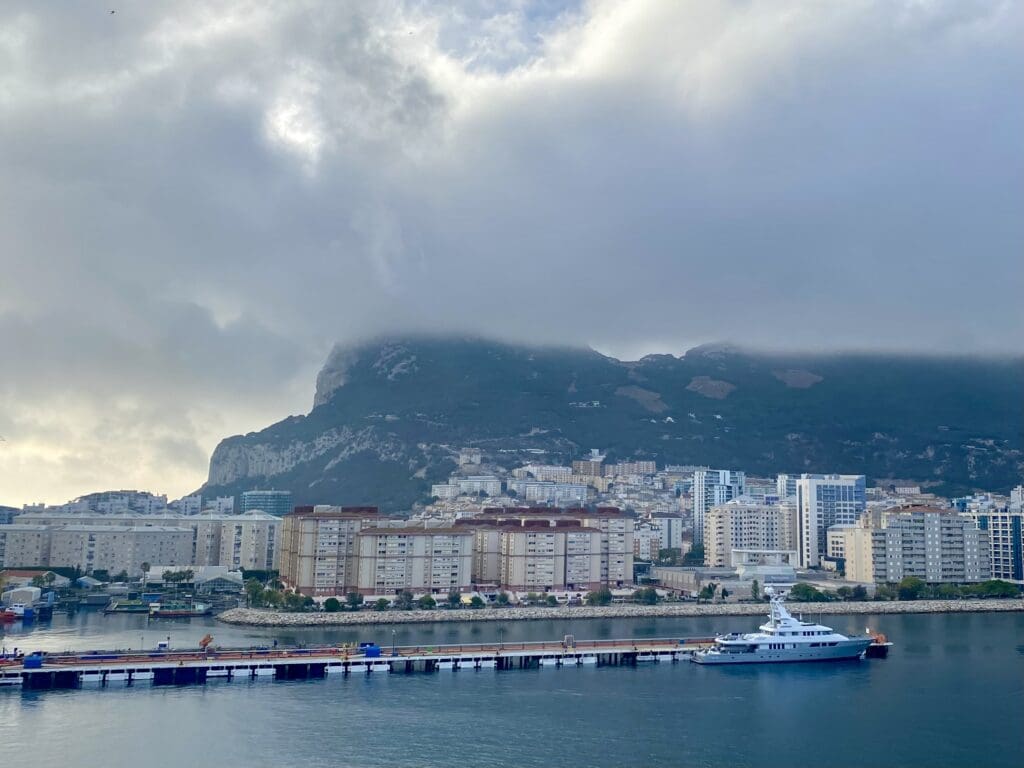
While tourism is a source of income for the city, their business acumen plays a much bigger role in the GDP. Their 12% flat tax on business income has resulted in over 30 international (European) casino’s headquartered here.
Even with all of its skyscrapers, the city is still considered a small town by its residents, who claim to know everyone in the city by their first names. There was even a story about a local man who tried to rob a bank. Apparently, everyone in the bank knew the man, and one of the tellers picked up the phone and called his mother, who reamed him out and told him to come home. Later in the day, the local police stopped by and arrested him at home. (“You are so grounded young man! One more word and I will turn this getaway car around!”)

Anyway, several James Bond movies were made here, and Agatha Christy and Seam Connery called Gibraltar home. At 1 Gibraltar Pound per liter, it is said to have the cheapest gasoline in Europe. (However, that equates to $5 US dollars per gallon. Puts things into perspective, yes?)
One lastly thing. Gibraltar is also famous for its historical Gin factory, which has been making gin since the 1500s. During COVID, the factory shifted gears and stated manufacturing hand sanitizer. One of the locals commented that they were so proficient at it that many of the local folks are still doing sanitizers. (Ha, ha!)
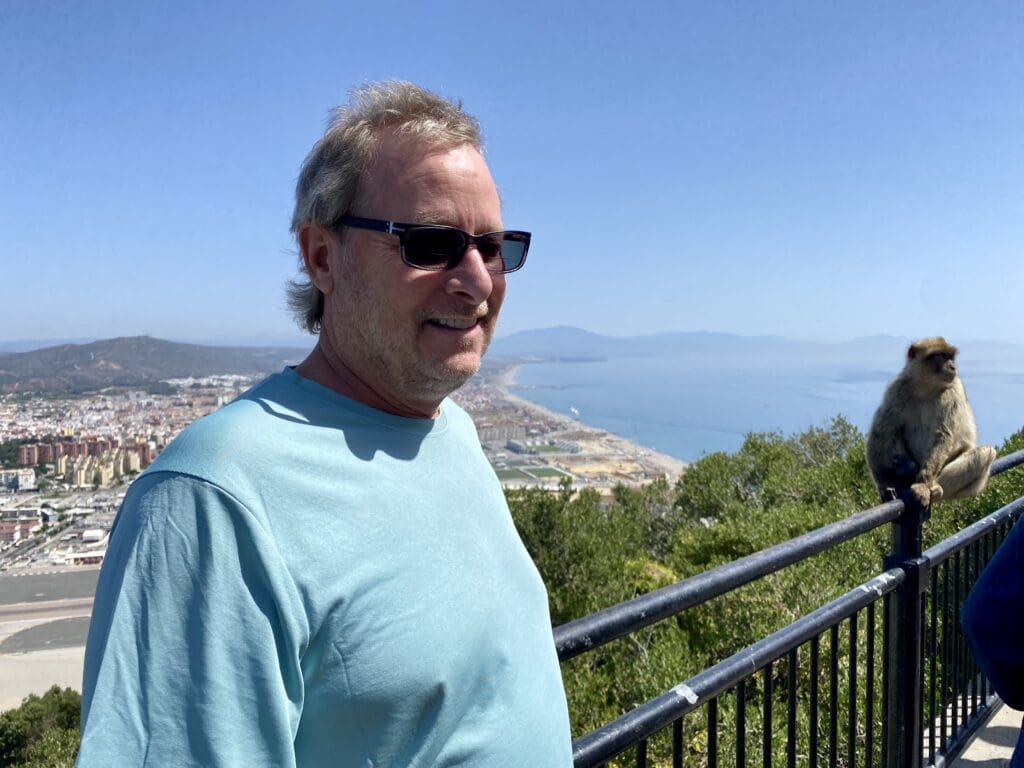
While Morocco is 8 miles across the strait, Gibraltar share a 3/4 mile wide land border with Spain. Due to its strategic location, it has been a heavily contested land mass for centuries. While Spain permanently ended the occupation of Muslim forces in the 1400s, spends hundreds of years battling with the British over the landmass before eventually ceded possession to Great Britannia in the 17th century.
So, I know what you’re thinking. What about the rock? Well, the Rock of Gibraltar is very large. At 1,400 feet high, the limestone monstrosity is some 3 miles long and 3/4 of a mile wide, making it approximately the same size as the city of Gibraltar.
While Great Britain managed to build a huge naval base here, in 1775, all but 6,000 soldiers were relocated during the American Revolutionary War. The Spanish decided to take advantage of that situation, and attempted to take back Gibraltar. In addition to building a dozen war ships in their harbor, they battled with the British along their shared border, in what came to be known as the Great Siege of Gibraltar.

At that time, a young man approach the British general and convinced him that he could build a tunnel inside the Rock of Gibraltar that could house dozens of cannons to ward off the Spanish. The key factor was that the area to be tunnels followed along a fault line at the top of the mountain. This would allow him to build the tunnel in a couple of months.
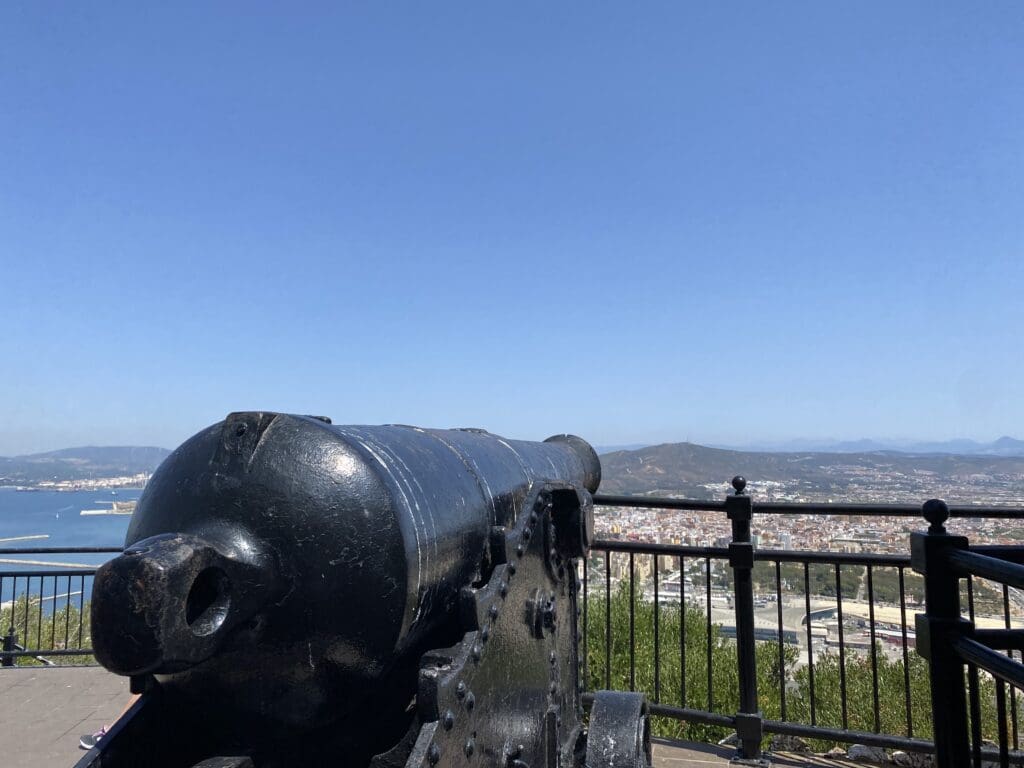
He was given a down and a half men, and the results were phenomenal. They not only had the high ground, but the guns were tucked inside a mountain, so they could not be targeted. Also, the developed two new projectiles. One was molten lead cannonballs. They used these to sink the ships being build in the Spanish harbor, and the second was developed by Colonel Shrapnel. His cannonball had a fuse and was filled with lead shot. These were fired by the cannons, and exploded while airborne, raining shrapnel on the Spanish troops. These three factors abruptly ended the siege.
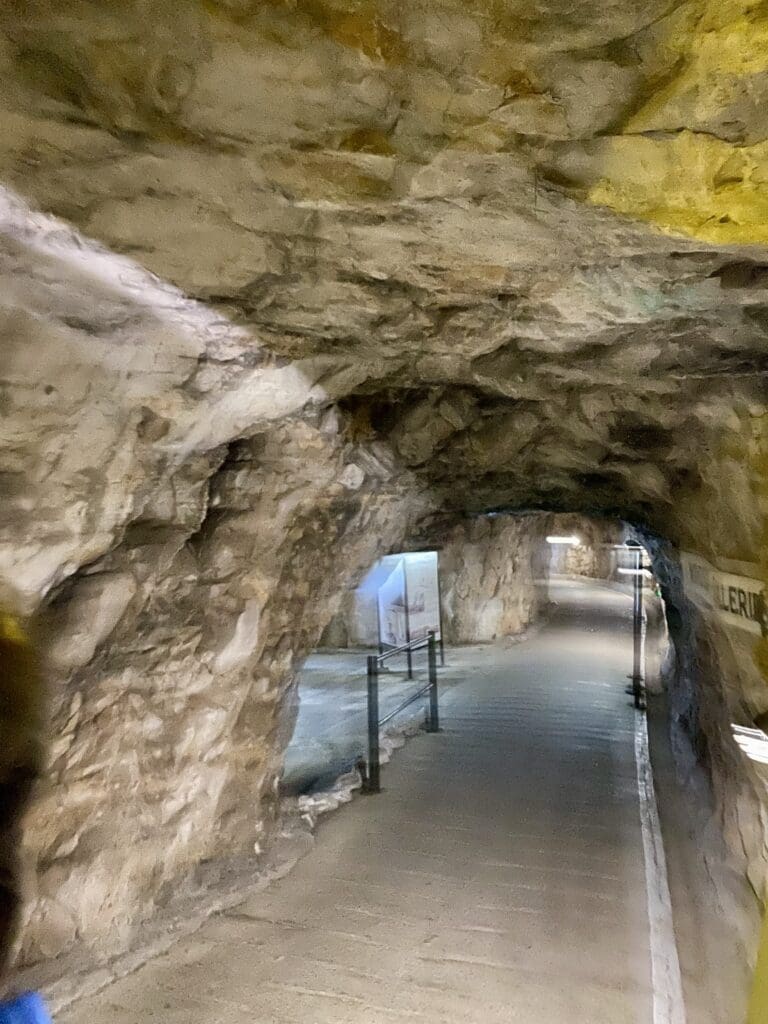
In subsequent centuries, Great Britain has built 140 separate caves and 34 miles of roads inside of the Rock. This houses an Air Force Base capable of housing some 17,000 troops.
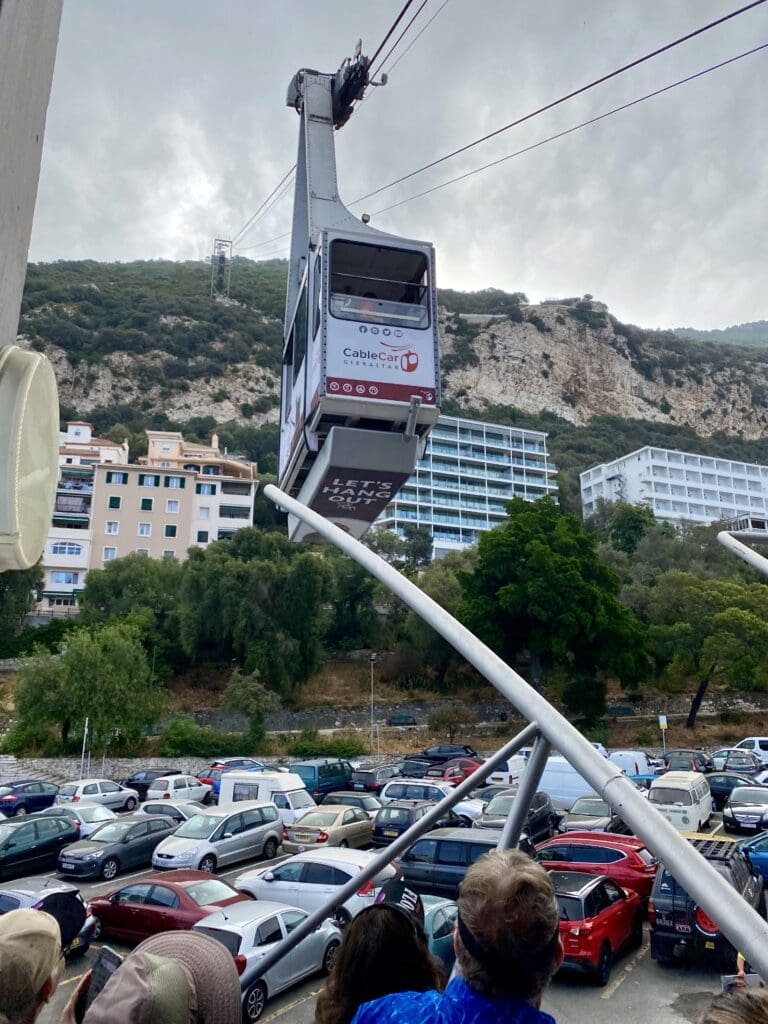
While we could not visit the government facility, we did enjoy a tram ride up to the top of the rock. After enjoying the views, we hiked down to Saint Michael’s Cave. Alone the way, we observed many playful Barbary Apes along the way. They really like getting in the taxis and pretending to drive. One taxi driver had a rubber snake on his dashboard, that seemed to keep the apes from climbing into the windows.
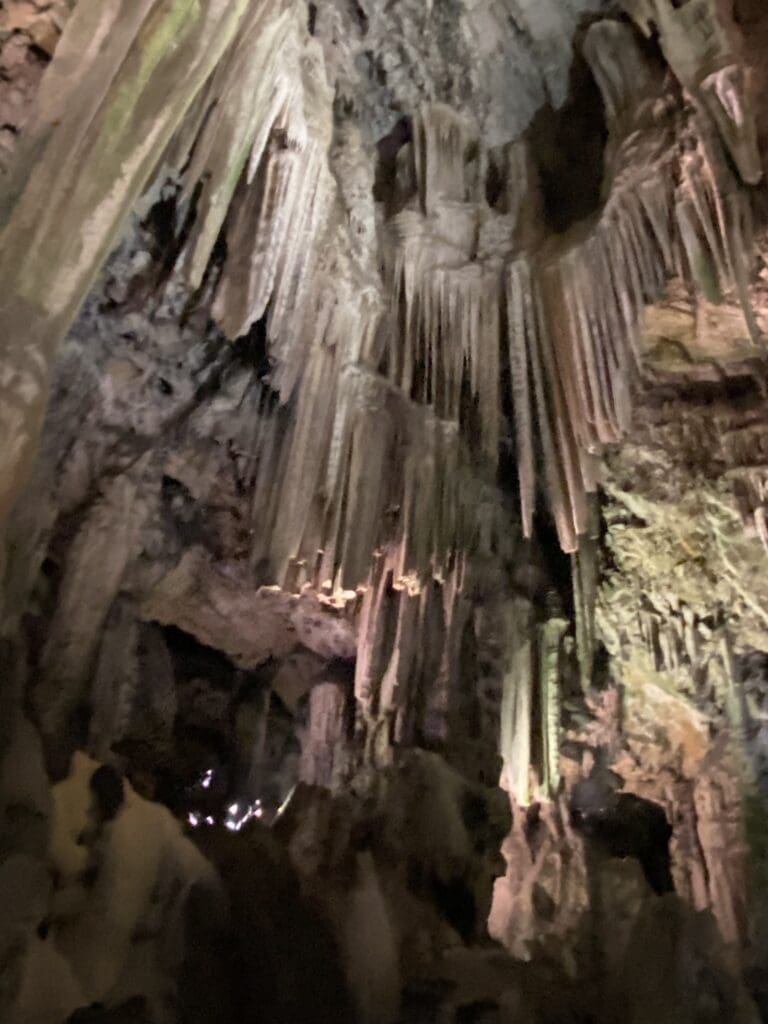

The cave receives over a million visitors a year, and had a really cool grouping of stalactites that look just like an angel.
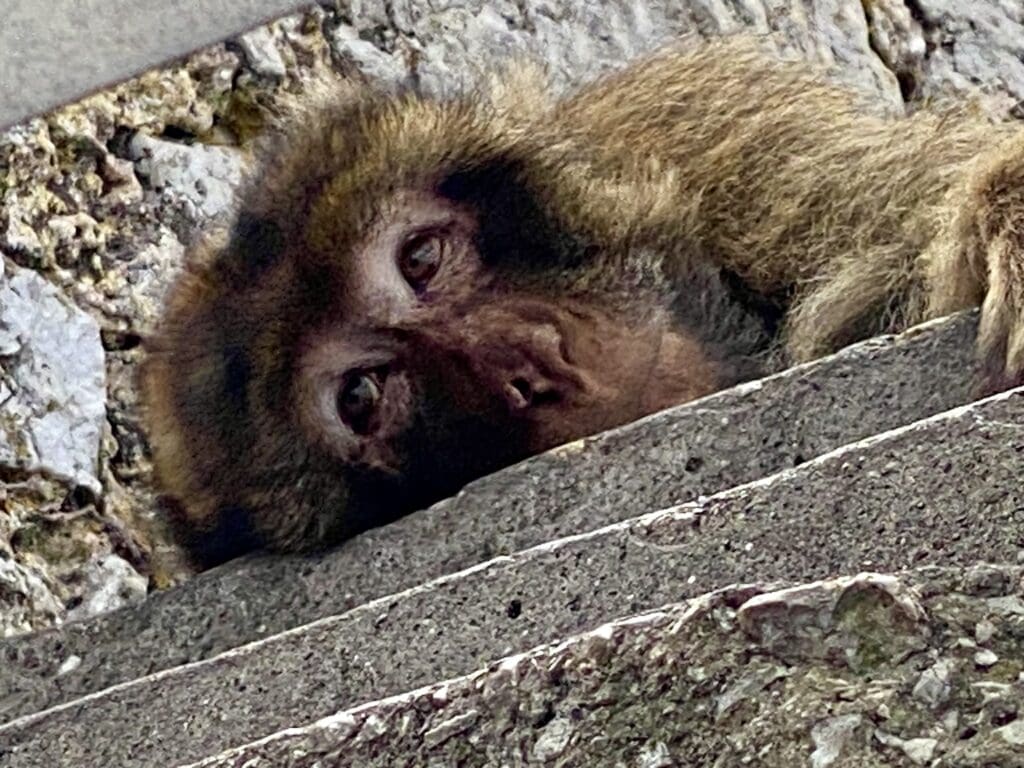
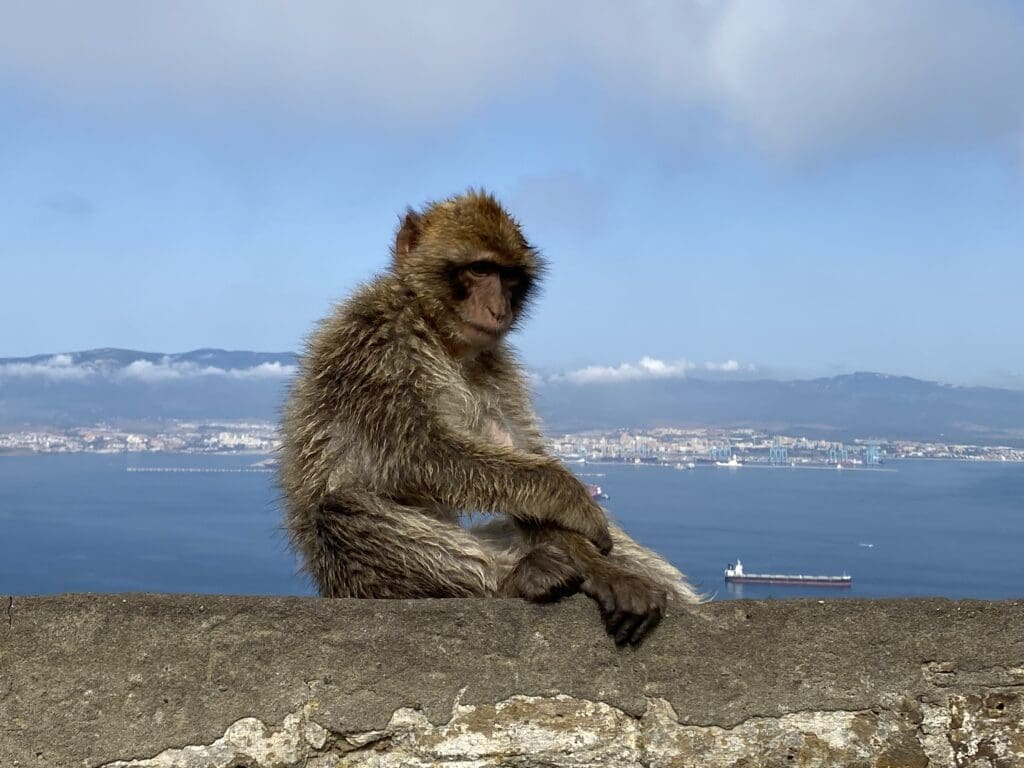
Afterwards, we toured the Great Siege tunnels I spoke of earlier. I especially like the metal curtains that they hung, covering the holes where the cannons stick out. This kept sparks from blowing back into the tunnels when the cannons were fired, but also prevented the Spanish to see when they were reloading, preparing to fire, etc.
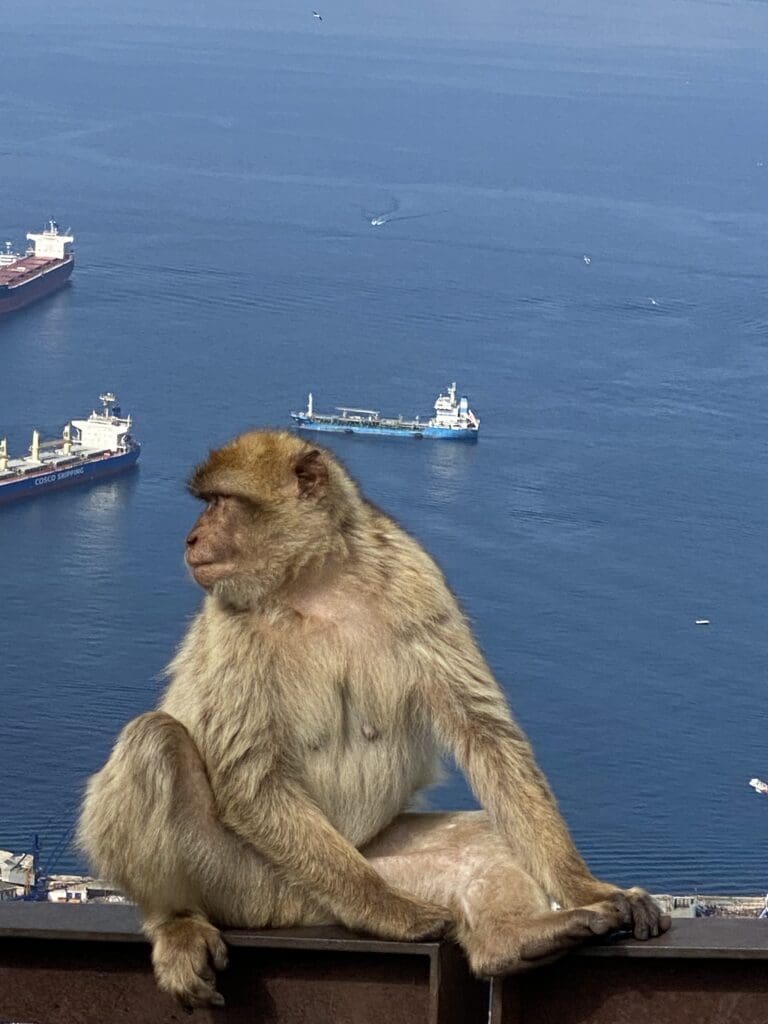
On the way back to the ship, we went to the border, and were dropped off at the airport runway. It turns out the young can walk across the runway, and this offers the best view of the Rock. (This was where the photograph was taken that’s it used in the “Own A Piece of the Rock” insurance commercial. Some 20,000 steps later, I returned to the ship for diner.
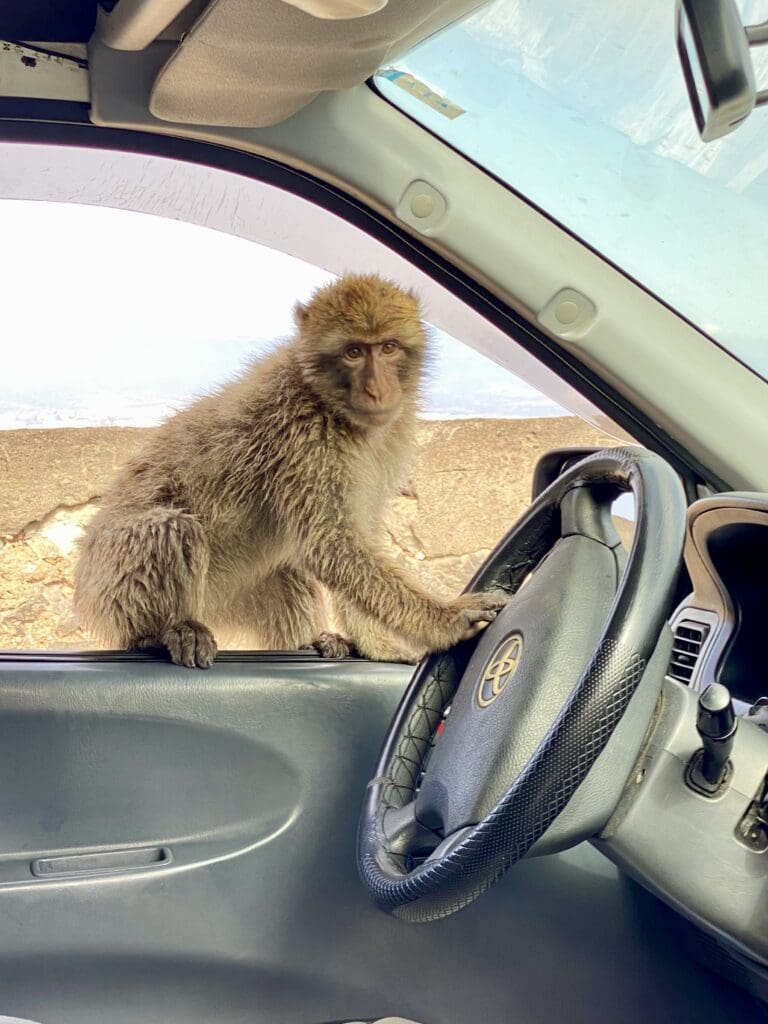
What a day! I highly recommend a visit to Gibraltar if you are ever in the area. Next stop, Corfu, Greece, but that, my friends, is a story for another day.
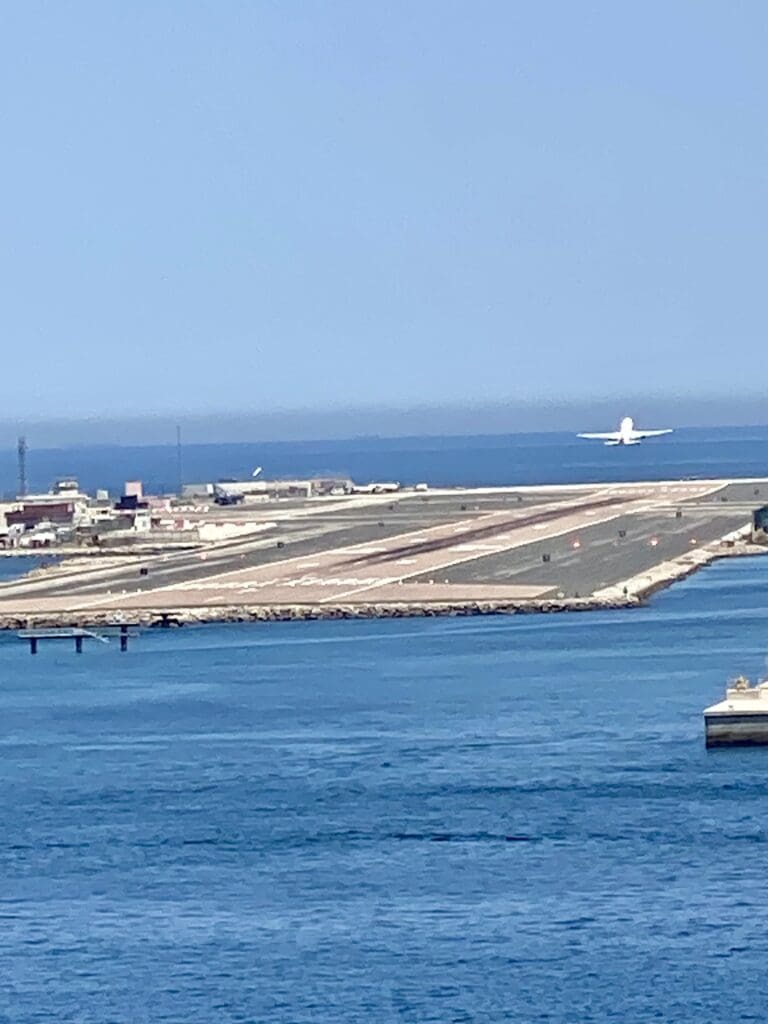
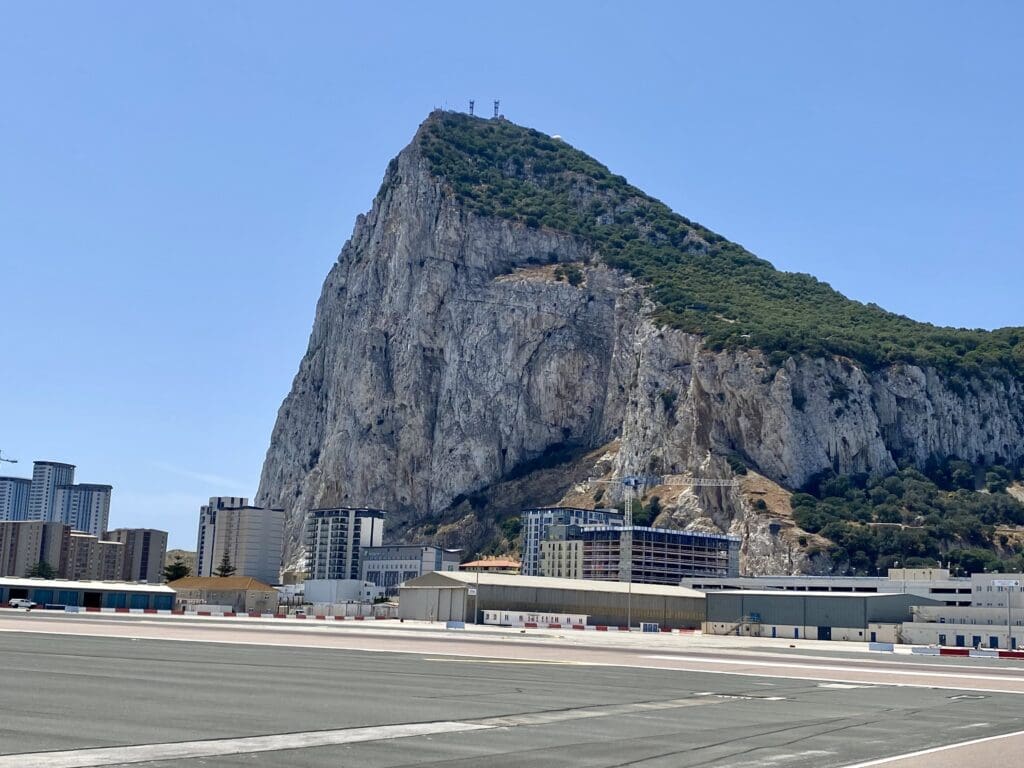
Thank you again for visiting.
– Mike
“People don’t take trips… trips take people” – John Steinbeck, Travels with Charley: In Search of America.

Recent Comments